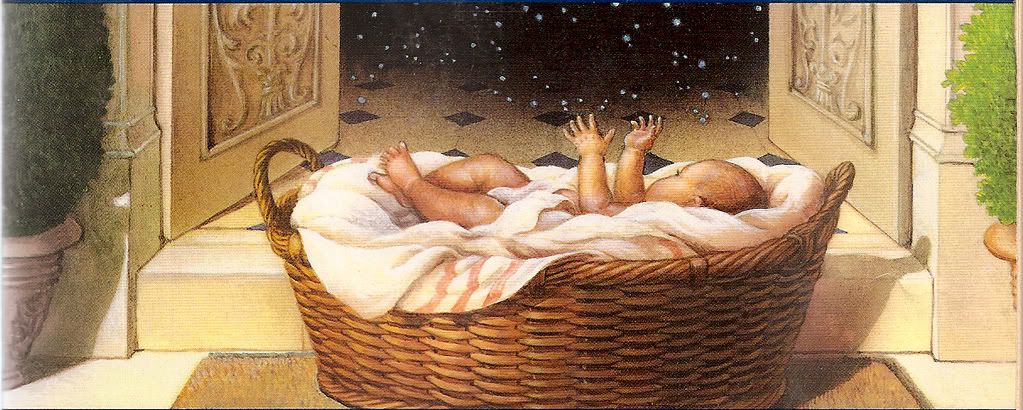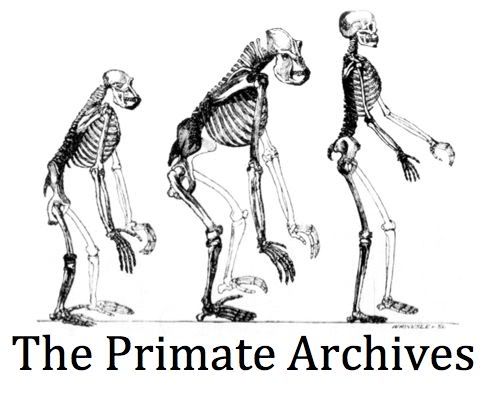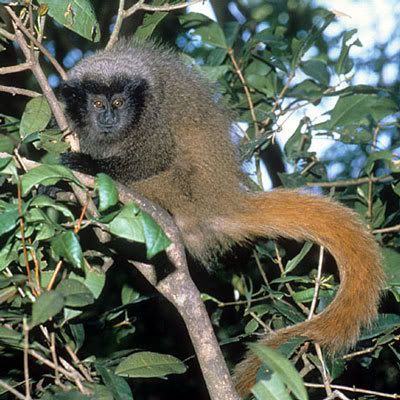How genes for altruism can benefit strangers as well as kin

The generosity of adoption has long been considered a unique human hallmark.
 For decades it was conventional dogma that humans were the only species that used tools. "Man the Toolmaker" was our celebrated designation. The hominin fossil Homo habilis (or "handy" man) was even defined within our genera primarily because the skeleton was associated with stone implements. However, when Jane Goodall discovered chimpanzees using modified sticks at Gombe to "fish" for termites, Louis Leakey famously cabled her that:
For decades it was conventional dogma that humans were the only species that used tools. "Man the Toolmaker" was our celebrated designation. The hominin fossil Homo habilis (or "handy" man) was even defined within our genera primarily because the skeleton was associated with stone implements. However, when Jane Goodall discovered chimpanzees using modified sticks at Gombe to "fish" for termites, Louis Leakey famously cabled her that:
Now we must redefine man, redefine tool - or accept chimpanzees as human.
By now people should stop insisting on singling out specific human behaviors and declaring them to be unique in the natural world. Invariably, whatever special attributes humans possess, other primates do in some form as well. For many years it's been argued that humans are the only primates that will adopt unrelated individuals to care for as their own. This has been conventional wisdom because it doesn't make intuitive sense according to the rigid definition of biological fitness.
Since animals, including humans, are primarily ambulatory vehicles for their selfish genes, it would be to one's benefit to care for a niece or cousin that lost their mother but not for a stranger of which there was no genetic relation. This is because any genes that promoted such altruism towards unrelated individuals would end up losing out by using up resources that didn't perpetuate themselves. However, these "altruistic genes" would be passed on and thrive if they were helping a kin member with similar genetic makeup. In the currency of reproductive fitness, nepotism pays.
 However, in the journal Primates (subscription required), Cristiane Cäsar and Robert John Young report on a case of adoption among a wild group of black-fronted titi monkeys (Callicebus nigrifrons) (see right) from the rainforests of Brazil.
However, in the journal Primates (subscription required), Cristiane Cäsar and Robert John Young report on a case of adoption among a wild group of black-fronted titi monkeys (Callicebus nigrifrons) (see right) from the rainforests of Brazil.
Since July of 2005 the team has been studying this largely unknown species, when, much to their surprise, they witnessed a new infant traveling with the group that wasn't there previously (the authors subsequently determined that a nearby group was missing an infant). Presumably the infant got lost from its former group and ended up being saved by the latter. Even more remarkably, it was the male in the new group that provided much of the adoptive care:
"Observations of the adoptive group confirm that it was being cared for by the adult male, and initially the group's adult female was nursing the infant alongside her biological infant. . . Thus, in the case of adoption by C. nigrifrons there is an argument to include male primates in the definition of adoption."
This would appear to undermine the notion that only related individuals would be adopted and cared for by others. However, the authors speculate that the two groups might be distantly related, thus suggesting kin altruism as the explanation for this unique occurrence. While this could be, the coefficient of genetic relatedness would likely be much too low for such a large investment to be in the genetic interests of the adoptive parents. Furthermore, any genetic mechanism involved (let alone an epigenetic one) would be unlikely to be so precise as to differentiate a kin member from a stranger. Since any orphan they come across would have a higher chance of being from their own group (and thus closely related), a genetic "rule of thumb" would be to provide assistance to all abandoned infants so long as resources were available.
Much the same has been argued for the origin of human altruism. Since most modern hunter-gatherer populations (and presumably our hominin ancestors) live in small groups of closely related individuals, the chances of helping a kin member by behaving altruistically are very high. Our genes today are descended from such close knit communities and don't realize that we now live in enormous populations of strangers where being generous doesn't directly improve our reproductive fitness.
By this simple act of adopting a strange infant, these titi monkeys are teaching us an important lesson about evolutionary strategies. While the net sum of behaviors in the natural world is for the perpetuation of their genes, such mechanisms can't always differentiate the forest for the trees. Genes that evolved for one set of environmental constraints (in this case helping the infant of a kin member) could promote behaviors for another (helping the infant of a stranger). This should give us some hope as political commentators suggest that our world is spinning out of control as the result of factionalized groups based around instincts for kin networks. If we can extend our notion of kin from our local population to the global community, then perhaps we'll find a way to help one another. Our genes are already primed to benefit their close relations, we just need to find a way to put them to use for the benefit of the human family.
Reference:
Cäsar, C., & Young, R. (2007). A case of adoption in a wild group of black-fronted titi monkeys (Callicebus nigrifrons) Primates, 49 (2), 146-148 DOI: 10.1007/s10329-007-0066-x

"Since animals, including humans, are primarily ambulatory vehicles for their selfish genes..."
Nicely put, but isn't it a matter of perspective? You can reduce it to the level of selfish genes, or expand it to the level of all titi monkeys, or all primates. From that perspective, the individual titis or primates seem to be the impetus for action, not the superorganism of all titis or primates, but it's just perspective. In this same way, couldn't adoption of an unrelated (or distantly related) individual be as unremarkable as a single gene not coding for anything inherently beneficial. As long as it doesn't kill an individual before they reproduce, any gene could conceivably pass through generations. A single pair of titis adopting an unrelated individual, may be a mis-behaving, but not detrimental gene in an otherwise completely predictable and logical superorganism that is all titis.
The problem with expanding it to the macro level of all titi monkeys is that the coefficient of genetic relatedness would shrink to almost zero (meaning it would be very unlikely that an individual you were helping was related to you). The gene is the ultimate unit of selection and, according to traditional sociobiology, any genes that encourage an individual to take a hit in order to help nonkin are reducing their fitness over the long term. Any genes that encouraged such behavior wouldn't be around for many generations before disappearing. You are correct that this would work for superorganisms. However, this only exists in Hymenoptera or in rare cases among different orders, such as naked mole rats, that are extremely inbred so that all members of the group have a coefficient as high, or higher, than their own offspring.
However, this study (and several others) suggest that traditional sociobiology is incomplete. Joan Roughgarden has proposed an alternative perspective that she calls social selection theory. I'm reading her book The Genial Gene right now and will be writing about it in the future.
Couldn't it also be that a small titi group benefits from increasing its size? That's been argued as an explanation for adoption and even kidnapping in a number of species, including white-winged choughs and banded mongooses.
For instance, see [Kidnapping and reciprocity in cooperatively breeding white-winged choughs. Heinsohn, RG. Animal Behaviour. 1991] and
[Kidnapping and infanticide between groups of banded mongooses. Mammalian Biology. Müller, C. A. & Manser, M. B. 2008.]
Sorry for the slow response. I think this is an excellent hypothesis. However, both studies you cite are talking about cooperatively breeding species. Callicebus nigrifrons are not considered cooperative breeders (having an average group size of only 2.2 individuals). Endocrinological studies of cooperative breeders (see, for example, Ziegler, 2000) show that they are generally more tolerant than species who aren't. What would be important to look at is a metanalysis of literature on the subject of adoption or kidnapping to find out the kinds of animal societies that are most prone to this. I'm not aware of any such study but, from the literature I'm aware of, the behavior shown by C. nigrifrons remains perplexing given existing theory.
"The problem with expanding it to the macro level of all titi monkeys is that the coefficient of genetic relatedness would shrink to almost zero"
Yes, but that's still using the measurements of the micro level at the level of the macro. In order to evaluate rates of change at the macro level, you need a new metric.
I recently came across your blog and have been reading along. I thought I would leave my first comment. I don't know what to say except that I have enjoyed reading. Nice blog. I will keep visiting this blog very often.
Betty
http://adoptpet.info
I recently came across your blog and have been reading along. I thought I would leave my first comment. I don't know what to say except that I have enjoyed reading. Nice blog. I will keep visiting this blog very often.
Betty
http://adoptpet.info